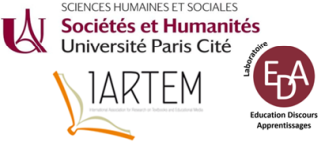Research problem and research questions
The paper reports on exploratory ten-year-long research focused on the study habits of university students related to the use of learning materials, and it is a follow-up to the study presented at the preceding IARTEM conference. The overall aim of the study was to find out what study resources university students used, in which ways they used the resources and if the ways of use were related to the students' approaches to learning.
The term ‘study habits related to learning materials' refers to the frequency of use of different genres and formats of learning materials, the factors that influence their selection, the ways in which materials are procured, the times at which materials are used, and the procedures that students adopt when learning from them. In recent years, some studies in the broad research field of higher education concerning teaching and learning materials have occurred, the vast majority of those focused on the comparison of printed and digital materials (e.g. Mizrachi et al., 2018). Apart from this solid thematic stream, research on the use of university study resources still remains somewhat limited. Understanding and diagnostics of learning approaches in this study stem from the theory of approaches to learning, which is based on classical studies by Marton and Säljö on deep and surface approaches (e.g. Marton & Säljö, 1997).
This paper will address fundamental research questions related to the dramatic contemporary changes in the ecology of learning materials: How has the use of learning materials by undergraduate student teachers changed over the past decade? Have students' study habits changed along with the change in learning materials' use?
Methodology
Considering the lack of research findings on the usage of study resources and study habits of university students related to learning materials, a design of an exploratory quantitative survey has been adopted. The data were elicited by means of two tools: an adapted Czech version of an original British tool, ASSIST (Approaches and Study Skills Inventory for Students) and The Use of Study Resources Questionnaire (USRQ), a tool of our own construction. The ASSIST questionnaire (2005) was originally developed at the University of Edinburgh, and throughout the years, its validity has been examined in many different countries and cultures. The tool has been adapted and verified in a pilot study, and confirmatory analyses have been applied. The values of Cronbach's alpha coefficient of reliability of both instruments were acceptable.
The data collection was carried out at the Faculty of Education, Faculty of Science and Faculty of Arts, University of Ostrava, Czech Republic. Data were collected repeatedly each November to December for ten years, from 2013 to 2023. The research sample comprised teacher students from three faculties who had studied in the 1st year of their Master's studies at the University of Ostrava (n = 1049). The questionnaire was administered to all teacher students in the year and the return rate ranged between 60–70 percent.
The analyses of the normality of the data proved that they were not normally distributed. Therefore, the Kruskal-Wallis and Mann-Whitney nonparametric tests were chosen for testing the hypotheses, followed by post-hoc tests. The test power characteristics and effect size significance were elicited, too.
Results
The statistical analyses proved the study habits significantly differed according to the approaches to learning with the only exception: the students unambiguously preferred learning from printed texts over learning from texts in the digital form. The results suggest that while the use of digital materials (and most recently, artificial intelligence as a resource for learning) has increased dramatically over the years, study habits related to materials use have not changed significantly. Students were still the most likely to use their own notes from lectures and seminars, presentations created by teachers and course readers as the most frequent materials. At least one-third of the students considered one or two resources as sufficient while preparing for an exam or a test, and over half of the students used learning materials almost solely at the end of the course.
References
Approaches and Study Skills Inventory for Students (ASSIST). (2005). Enhancing Teaching-Learning Environments in Undergraduate Courses (ETL Project). School of Education. University of Edinburgh, 2001–2005.
Marton, F., & Säljö, R. (1997). Approaches to learning. In F. Marton, D. J. Hounsell & N. J. Entwistle (eds.), The Experience of Learning, 2nd edition (pp. 39–58). Edinburgh: Scottish Academic Press.
Mizrachi, D., Salaz, A., Kurbanoglu, S., & Boustany, J. (2018). Academic reading format preferences and behaviors among university students worldwide: A comparative survey analysis. PLoS ONE 13(5). Retrieved from: https://doi.org/10.1371/journal.pone.0197444
- Poster

 PDF version
PDF version

